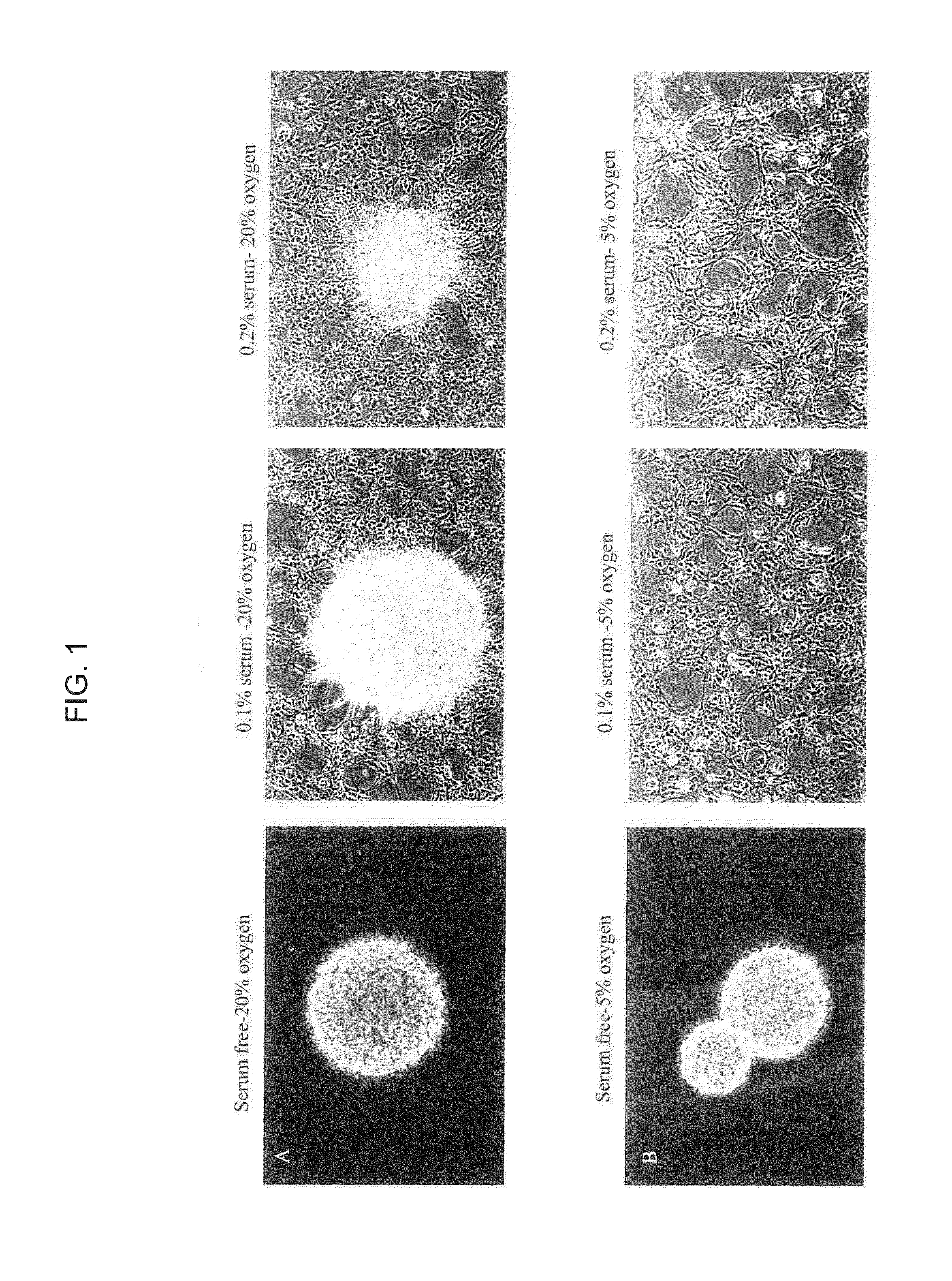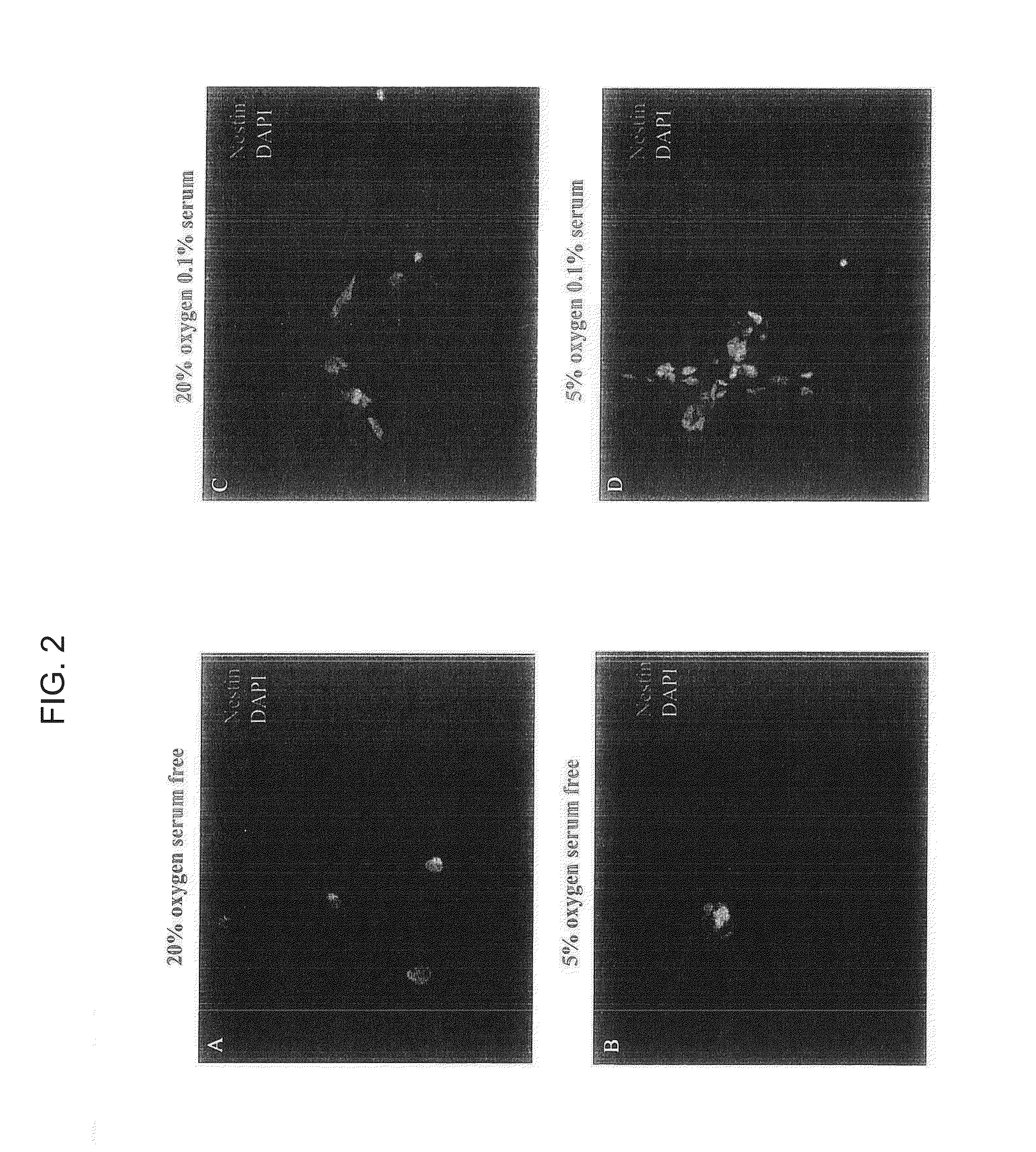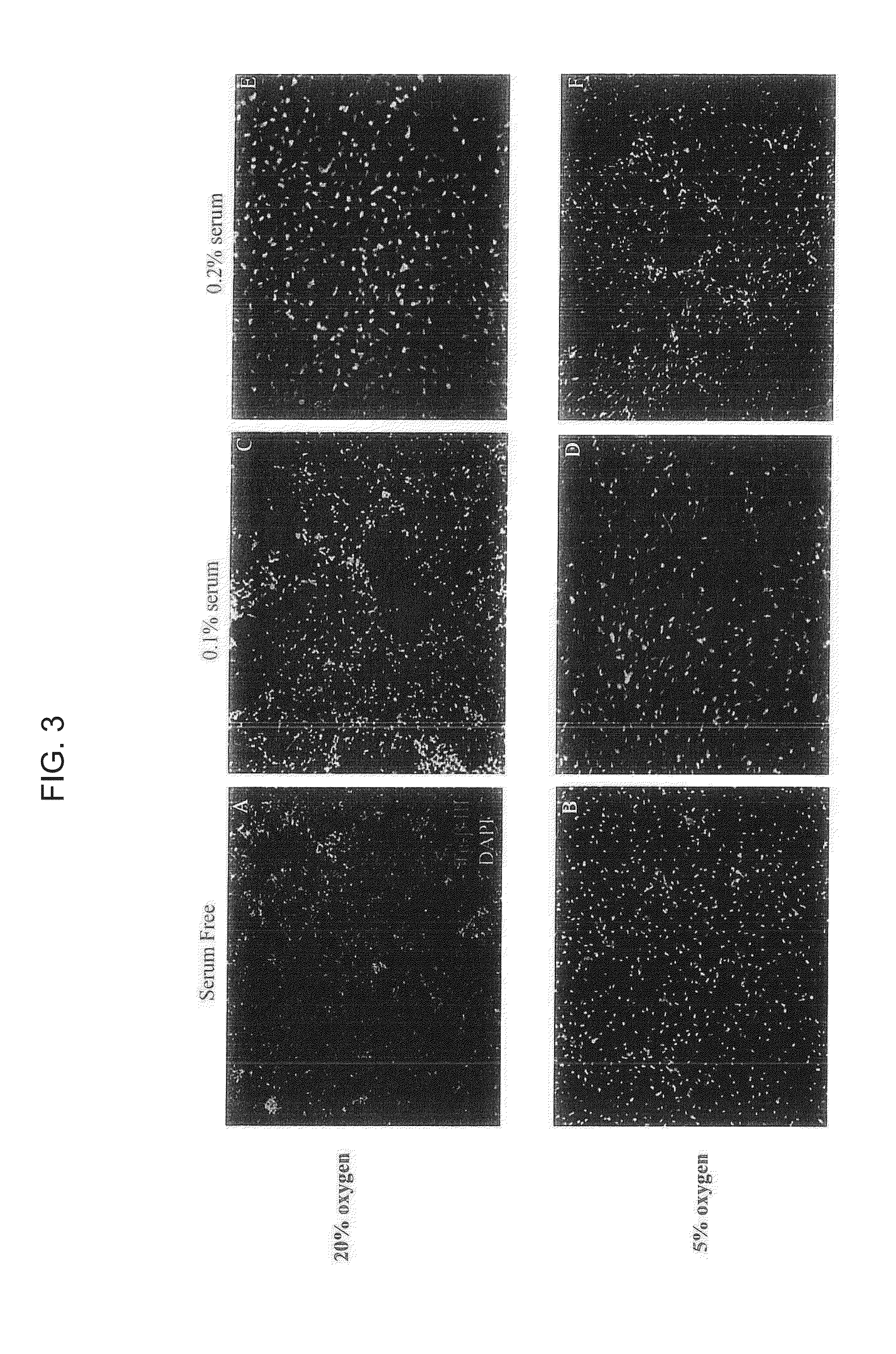Stem cells and stem cell factors for inhibiting the progression of alzheimer's disease
a stem cell factor and alzheimer's disease technology, applied in the field of stem cells and stem cell factors for inhibiting the progression of alzheimer's disease, can solve the problems of complex problem, difficult to generate large numbers of stem cells for therapeutic use, and often require the administration of stem cells in large numbers, so as to improve the speed and yield of stem cells, increase cell proliferation, and improve the effect of stem cell yield
- Summary
- Abstract
- Description
- Claims
- Application Information
AI Technical Summary
Benefits of technology
Problems solved by technology
Method used
Image
Examples
example 1
Tissue Collection and Cell Cultures
[0108]Human neural stem cells were collected from 8-10 week-old fetal brain. Brain tissue was freshly dissected and dissociated in Accutase (Sigma Aldrich) for 30 min at 37° C. The cells were seeded in different oxygen tensions and condition medium including 20% or 5% oxygen, with serum-free medium, 0.1% serum condition medium, or 0.2% serum condition medium in 100 mm cell culture dish. Neurobasal medium was used for basal medium to maintain NSCs. The components included: Neurobasal (96%; Gibco / Invitrogen, Grand Island, N.Y.); GlutaMAX (1%; Gibco / Invitrogen); Heparin (8 mg / ml; Sigma-Aldrich, St. Louis, Mo.) (26). To this added the following factors were added: basic Fibroblast Growth Factor and Epidermal growth factor (bFGF; 20 ng / ml; EGF; 20 ng / ml; human, recombinant; Chemicon International, Temecula, Calif.) with 0.1% or 0.2% FBS (Hyclone). For routine passaging, TrypLE was used as the dissociating agent (Invitrogen).
Chicke...
example 2
Cell Transplantation to Mammalian Host
[0113]The objectives of this study were as follows: 1) to investigate whether intravenous treatment with human adult bone marrow stem cells (HBMSC) alone or in combination with intrathecal treatment with human fetal neural stem cells (HFNSC) 1 day after occlusion provides sensory-motor and cognitive recovery and affect infarct volume in spontaneously hypertensive rats (SHR) subjected to 60 min middle cerebral artery occlusion (tMCAO), 2) to compare the functional recovery following intravenous injections of HBMSC expanded under normal and low O2 tissue culture conditions (HBMSC-LO2).
[0114]Seven and 28-point Neuroscore tests were performed to study sensory-motor deficits and general condition on days 1, 3, 7, 14, 21, 28, 35 and 42 post-ischemia. Cylinder test was performed on days 7, 21 and 35 post-ischemia. Cognitive deficits were evaluated by Morris water maze test on days 28-29 post-stroke. Skilled paw function was tested with Montoya's stairc...
example 3
MSC Expansion
[0168]Mesenchymal stem cells (MSC) were isolated from human bone marrow (BM). BM specimen (BMS) was obtained from 18-25 year old healthy adults and provided by Lonza (Lonza Walkersville, Inc., Walkersville, Md.). The mononuclear fraction was obtained using Ficoll-Paque™ Premium (Ficoll-Paque, GE Healthcare, Piscataway, N.J.) separation protocol. The BMS was slowly overlaid onto the Ficoll-Paque and centrifuged at 500×g for 30 minutes. The upper layer (plasma) was discarded via pipet to within 1 cm of the mononuclear cell layer. The mononuclear cells (yellow portion of bumpy cord) were transferred into a centrifuge tube. A volume of Hank's Balanced Salt Solution (HBSS, Gibco, Invitrogen Corporation, Carlsbad, Calif.) HBSS was added to the tube. The cells were aspirated and centrifuged at 600×g for 10 minutes at room temperature. The supernatant was removed and discarded. The cells were resuspended in a small volume of mesenchymal stem cell growth media (MSCGM) consisting...
PUM
| Property | Measurement | Unit |
|---|---|---|
| Fraction | aaaaa | aaaaa |
| Therapeutic | aaaaa | aaaaa |
| Plasticity | aaaaa | aaaaa |
Abstract
Description
Claims
Application Information
 Login to View More
Login to View More - R&D
- Intellectual Property
- Life Sciences
- Materials
- Tech Scout
- Unparalleled Data Quality
- Higher Quality Content
- 60% Fewer Hallucinations
Browse by: Latest US Patents, China's latest patents, Technical Efficacy Thesaurus, Application Domain, Technology Topic, Popular Technical Reports.
© 2025 PatSnap. All rights reserved.Legal|Privacy policy|Modern Slavery Act Transparency Statement|Sitemap|About US| Contact US: help@patsnap.com



